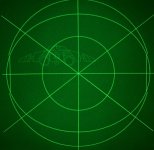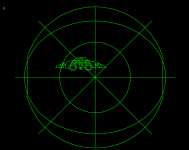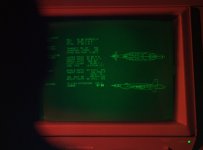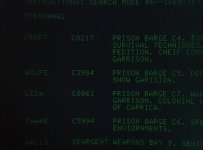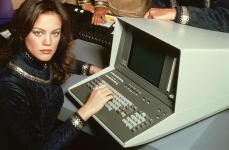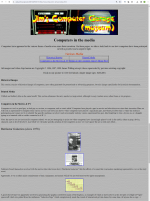nikola-wan
Veteran Member
I have had my Tektronix 4052 and 4054 computers since 2000, and I had found websites that proclaimed the Tektronix 4051 computer was used for the Battlestar Galactica screenshots of Cylon and BaseStar attacks.
There was also the rumor that a Battlestar Galactica demo tape contained programs for those screenshots.
I have not found any of those programs in my recovery of the files on over 100 4050 computer tapes.
Vintagetek.org has a webpage showing Tektronix equipment in the movies and TV shows: https://vintagetek.org/tektronix-in-movies-shows/
They have a June 16, 1978 TekWeek article featuring Battlestar Galactica and showing that Tektronix 4051 computers (introduced in 1977) were displayed on the bridge.
In addition, the next article is a post from Curt Coleman, the Tektronix 4081 Product Line Manager setting the record straight and indicating the Tektronix 4081 generated the battle display images for the show. The Tektronix 4081 was introduced in 1977 and was a Tektronix 19" storage tube graphics screen connected to an Interdata 32-bit minicomputer with custom Tektronix operating system and application programs.
So, I have begun writing a Battlestar Galactica demo program to run on my Tektronix 4052 and 4054A computers. I believe these computers (introduced in 1979) may come close to the performance of the 4081 as they are about 10x the performance of the 4051 with their 16-bit bit-slice CPU with microcoded floating point. In addition, the 4052R12 Enhanced Graphics ROM pack increases the graphics performance another 10x, and allows objects to be moved, scaled and displayed in refresh mode like the 4081 computer.
I began writing my demo program today and started with programming the screen that shows targeting a Cylon fighter. This is my screen capture of targeting a Cylon from my BluRay collection of the entire TV series.

Here is my mockup of that screen - captured from the Tek 405x web-browser emulator for the 4051.
It took a couple of hours to digitize the Cylon fighter, but now I can use that data with the Enhanced Graphics ROM Pack to create a fast graphics object that can be moved around, scaled and displayed in refresh mode.

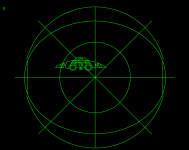

There was also the rumor that a Battlestar Galactica demo tape contained programs for those screenshots.
I have not found any of those programs in my recovery of the files on over 100 4050 computer tapes.
Vintagetek.org has a webpage showing Tektronix equipment in the movies and TV shows: https://vintagetek.org/tektronix-in-movies-shows/
They have a June 16, 1978 TekWeek article featuring Battlestar Galactica and showing that Tektronix 4051 computers (introduced in 1977) were displayed on the bridge.
In addition, the next article is a post from Curt Coleman, the Tektronix 4081 Product Line Manager setting the record straight and indicating the Tektronix 4081 generated the battle display images for the show. The Tektronix 4081 was introduced in 1977 and was a Tektronix 19" storage tube graphics screen connected to an Interdata 32-bit minicomputer with custom Tektronix operating system and application programs.
So, I have begun writing a Battlestar Galactica demo program to run on my Tektronix 4052 and 4054A computers. I believe these computers (introduced in 1979) may come close to the performance of the 4081 as they are about 10x the performance of the 4051 with their 16-bit bit-slice CPU with microcoded floating point. In addition, the 4052R12 Enhanced Graphics ROM pack increases the graphics performance another 10x, and allows objects to be moved, scaled and displayed in refresh mode like the 4081 computer.
I began writing my demo program today and started with programming the screen that shows targeting a Cylon fighter. This is my screen capture of targeting a Cylon from my BluRay collection of the entire TV series.

Here is my mockup of that screen - captured from the Tek 405x web-browser emulator for the 4051.
It took a couple of hours to digitize the Cylon fighter, but now I can use that data with the Enhanced Graphics ROM Pack to create a fast graphics object that can be moved around, scaled and displayed in refresh mode.




